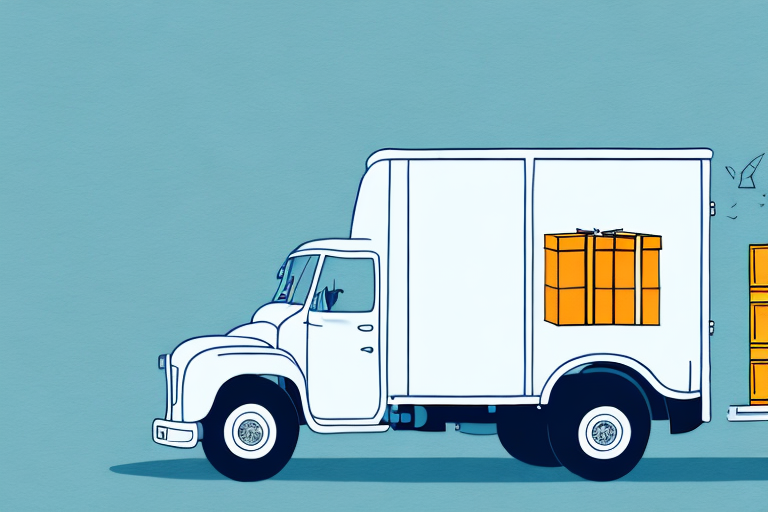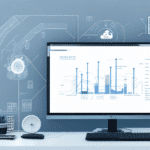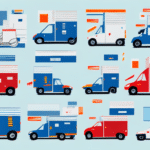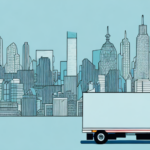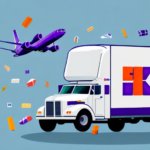What Are Residential Deliveries?
Residential deliveries involve transporting goods directly from businesses or sellers to customers' residential addresses. The surge in online shopping has significantly increased the demand for residential deliveries, making it an essential service for consumers worldwide. This comprehensive guide explores the evolution, benefits, challenges, and future trends of residential deliveries.
The Evolution and Impact of Residential Deliveries
A Brief History of Residential Deliveries
Residential deliveries have a long history, originating from ancient times when goods were transported via animal-driven wagons or hand-carried by messengers. The industrial revolution and urbanization led to the development of postal services and delivery companies, enhancing efficiency with motor vehicles and aircraft. In recent years, the rise of e-commerce has revolutionized the industry, introducing technologies like drones and autonomous vehicles to meet growing consumer demands.
Impact of E-Commerce on Residential Deliveries
The explosion of e-commerce has transformed the delivery landscape. According to ShipScience, global e-commerce sales reached $5.7 trillion in 2022, driving an unprecedented demand for reliable residential deliveries. This growth has pushed delivery companies to innovate, focusing on faster shipping options, real-time tracking, and enhanced customer experiences.
Changes During the COVID-19 Pandemic
The COVID-19 pandemic accelerated the reliance on residential deliveries as lockdowns and social distancing measures limited in-person shopping. Delivery services adapted by implementing contact-free deliveries and enhancing safety protocols. A report by ShipScience highlighted a 30% increase in last-mile delivery volumes during the pandemic, prompting further advancements in delivery technologies.
Benefits and Drawbacks of Residential Deliveries
Advantages
- Convenience: Consumers can order products from the comfort of their homes, saving time and effort.
- Accessibility: Provides access to a wide range of products, especially for those in remote areas or with mobility challenges.
- Real-Time Tracking: Enables consumers to monitor their shipments, ensuring transparency and peace of mind.
Disadvantages
- Theft and Damage: Packages left unattended are susceptible to theft and damage during transit.
- Environmental Impact: Increased delivery volumes contribute to higher carbon emissions and traffic congestion.
- Missed Deliveries: If recipients are unavailable, packages may be returned or require additional delivery attempts, leading to inconvenience and extra costs.
Types and Providers of Residential Delivery Services
Postal Services
Operated by national postal organizations like USPS, postal services offer reliable and affordable delivery options, including regular mail, priority, and express services. They are ideal for non-urgent deliveries but may not match the speed of courier services.
Courier Services
Courier companies such as UPS and FedEx are known for their speed and efficiency. They cater to urgent and time-sensitive deliveries, offering features like real-time tracking and insurance, though often at a higher cost compared to postal services.
Freight Delivery
Freight delivery is suitable for transporting bulky or oversized items. Companies specializing in freight offer tailored solutions that ensure safe and efficient handling of large shipments, often requiring more advanced logistics and planning.
Choosing the Right Residential Delivery Service
Factors to Consider
- Delivery Speed: Determine how quickly you need the package delivered.
- Shipping Options: Look for services that offer options like same-day, next-day, or standard delivery.
- Pricing: Compare costs to find a service that fits your budget.
- Tracking and Insurance: Ensure the provider offers reliable tracking and adequate insurance coverage.
- Customer Service: Evaluate the quality of customer support and after-sales services.
Tips for a Successful Delivery Experience
- Accurate Information: Provide correct address, contact details, and payment information.
- Use Tracking Tools: Monitor your shipment to anticipate delivery times and prevent missed deliveries.
- Secure Delivery: Consider options like secure lockers or designated delivery spots to minimize theft risks.
- Consolidate Orders: Reduce environmental impact by combining multiple orders into a single delivery.
Future Trends and Technological Advancements
Sustainable Delivery Solutions
The industry is increasingly focusing on sustainability, adopting electric vehicles, bicycles, and drones to reduce carbon emissions. According to ShipScience, the use of electric delivery vans is projected to grow by 40% by 2025.
Smart Lockers and Automated Systems
Smart lockers offer secure and convenient package retrieval without the need for a physical delivery person. Automated systems and robots are also being integrated to streamline warehouse operations and last-mile deliveries.
Autonomous Vehicles and Drones
Autonomous delivery vehicles and drones are being tested to enhance delivery efficiency and reduce reliance on human drivers. These technologies promise faster delivery times and lower operational costs in the long run.
Contact-Free Deliveries
Even post-pandemic, contact-free deliveries remain popular for their convenience and safety. This method involves leaving packages at designated spots, minimizing physical interactions between delivery personnel and customers.
Challenges and Environmental Impact
Common Challenges
- Last-Mile Delivery: The final leg of delivery is often the most complex and costly, involving traffic congestion and logistical hurdles.
- Package Theft: Increased delivery volumes have led to a rise in package theft incidents.
- Weather Conditions: Adverse weather can delay deliveries and damage packages.
Environmental Concerns
The rise in residential deliveries has led to increased carbon footprints and environmental degradation. To mitigate these effects, delivery companies are adopting eco-friendly practices such as using electric vehicles and optimizing delivery routes to reduce emissions.
Solutions to Overcome Challenges
- Route Optimization: Utilizing advanced software to plan efficient delivery routes, reducing travel time and fuel consumption.
- Secure Delivery Options: Implementing secure lockers and requiring signatures to prevent theft.
- Collaborative Logistics: Partnering with other delivery services to share resources and reduce redundancy.
The Role of Technology in Streamlining Residential Deliveries
Automation and AI
Automation and artificial intelligence are revolutionizing the delivery process, from package sorting to scheduling. AI-driven algorithms optimize delivery routes, predict delivery times, and enhance overall operational efficiency.
Real-Time Tracking and Delivery Apps
Technologies like GPS tracking and dedicated delivery apps provide customers with real-time updates on their shipments, improving transparency and customer satisfaction.
Online Payment Systems
Secure and seamless online payment options facilitate smooth transactions, enhancing the overall delivery experience for consumers.
Overall, residential deliveries have become an indispensable service for modern consumers and businesses. With continuous advancements and a focus on sustainability, the industry is poised for significant growth and innovation in the coming years.















